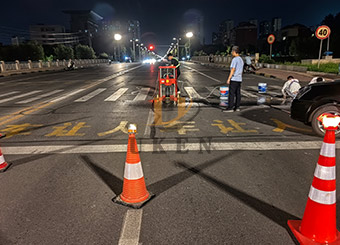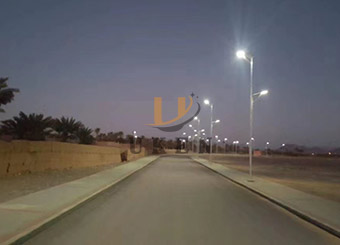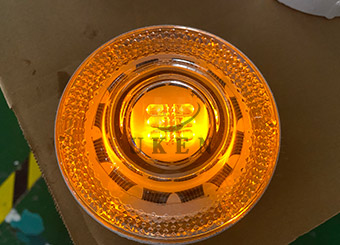Energy transition and lighting demand in the global advocacy of sustainable development in the context of the energy transition can not be delayed. The over-consumption of traditional energy not only brings resource crisis, but also leads to serious environmental pollution. Lighting as a necessity for daily life and public facilities, traditional street lights rely on utility power, exacerbating the energy pressure. With its clean and renewable characteristics, solar street light has become the key to change in the lighting field. It can meet the lighting needs, but also fit the concept of environmental protection, in improving the quality of lighting at the same time help energy saving and emission reduction, followed by an in-depth discussion of its application and deployment.
Correlation between energy consumption and emission: traditional streetlights rely on utility power, which is mostly generated by fossil energy. When coal, oil and other fossil fuels are burned, a large amount of carbon dioxide is discharged into the atmosphere. According to statistics, for every kilowatt-hour of electricity consumed, an average of 0.96 kilograms of carbon dioxide is emitted. Conventional street lights continue to illuminate for a long time and consume a lot of electricity, so the corresponding carbon emissions should not be underestimated. These carbon emissions aggravate the greenhouse effect and affect the global climate.
Environmental impacts of large-scale lighting: Taking a city with 100,000 traditional street lights as an example, assuming that each street light has a power of 250 watts and is lit up for 10 hours a day, the power consumption for one day will be 250,000 kilowatts, which corresponds to a carbon emission of about 240 tons. In one year, the carbon emission is more than 87,600 tons. Such a large-scale carbon emission seriously affects urban air quality, aggravates haze and interferes with ecological balance.
Solar energy conversion and zero-emission mechanism: solar street lights rely on solar panels. The solar panel consists of photovoltaic cells. When light is shone, photons excite electrons to generate electric current, which converts solar energy into electricity and stores it in the battery for the streetlights to use at night. The whole process does not require fossil energy, realizing zero carbon emission in the lighting process and reducing pollution from the source.
Long-term carbon reduction benefit analysis: still taking the above city as an example, if the traditional street light is replaced by a solar street light with a power of 200 watts, the street light can be used for 365 days a year, 10 days a day. Calculated on the basis of 10 hours of lighting per day, 365 days per year, a solar street light consumes 730 kWh of electricity per year. Compared with traditional street lights, each one reduces carbon emissions by 1513.6 degrees × 0.96 kg/degree ≈ 1453 kg. 100,000 solar street lights reduce carbon by more than 145,000 tons a year, and in the long run, it has a great effect on mitigating climate change.
Intelligent control and energy-saving technology integration: modern street lights integrate intelligent sensing, automatic dimming and other technologies. Intelligent induction can automatically switch on and off the street light according to the ambient light changes, avoiding the waste of energy during the daytime light. Automatic dimming adjusts the brightness according to the traffic flow and time, and reduces the brightness late at night when there are fewer cars and people, so as to effectively save energy and improve the efficiency of energy utilization.
Environmentally friendly materials and design innovations: In terms of materials, recyclable aluminum alloy is used as the lamp housing, which is corrosion-resistant, long-lasting and recyclable, reducing the waste of resources and environmental impact. In terms of design, optimize the light distribution curve of lamps and lanterns, adopt low-glare technology to reduce light scattering, reduce light pollution, improve lighting quality and protect the ecological environment.
Reducing air pollutant emissions: solar street lights have no fossil energy consumption and do not produce pollutants such as sulfur dioxide and nitrogen oxides. In the city, these pollutants will form acid rain and photochemical smog. The application of solar street lights eliminates pollution at the source, improves urban air quality and protects the health of residents.
Reduce the harm of light pollution: light pollution interferes with residents’ life and affects the ecology of plants and animals. Through rational design, solar street light can precisely control the direction and range of light to avoid light scattering. Intelligent control can also adjust the light intensity and color to reduce interference with the surrounding environment and maintain ecological balance.
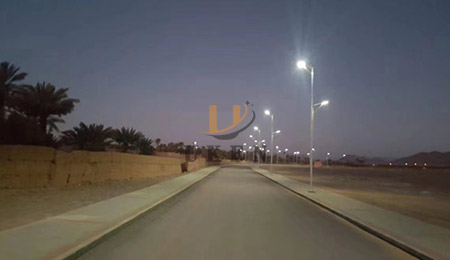
LED solar street light: LED light source is widely used in solar street light due to energy saving, long life and high luminous efficiency. Compared with high-pressure sodium lamps, LED street lamps save energy about 50% -70%. Its life expectancy can reach 50,000 – 100,000 hours, much higher than the 10,000 – 20,000 hours of high-pressure sodium lamps, reducing maintenance costs and providing better lighting. 2.
Other light source solar street lamps: a few solar street lamps use induction lamps and other light sources. Induction lamps have no electrode, and their lifespan can reach 60,000 – 100,000 hours, which is suitable for places that require high stability of light, such as hospital parking lots and transportation hubs. However, the cost is higher, the luminous efficiency is slightly lower, and the application range is relatively narrow.
Vertical solar street light: common vertical street light, pole height 6-12 meters, solar panels and lamps installed on the top. Applicable to roads, squares and other open areas, the installation should pay attention to the solid foundation of the pole, adjust the angle of the solar panels to efficiently charge and provide large-area lighting.
Wall-mounted solar street light: wall-mounted on the wall of the building, such as community hallways, courtyard walls. It saves space, is easy to install, and is suitable for localized lighting, but the lighting range is limited, and mainly meets the lighting needs of specific areas.
Ordinary solar street light: with basic lighting function, solar panel charging during the day, and luminous lamps at night. Applicable to rural roads, park trails and other general lighting scenes, low cost, cost-effective, to meet the basic lighting needs.
Intelligent solar street light: Intelligent street light integrates light sensing, human body sensing, remote monitoring and other functions. The light sensor automatically switches on and off the light, the human body senses people to light up, people walk light dark, remote monitoring can grasp the real-time status of the street light. In the city’s main roads, commercial neighborhoods and other scenes have obvious advantages, improve lighting management efficiency and safety.
Tips for purchasing solar street lights to clarify the lighting requirements
Lighting area and brightness requirements: Before purchasing, clarify the characteristics of the lighting area and brightness requirements. Road lighting according to the width of the road to choose the right street light, two-way four lanes need a wider range of lighting. Brightness requirements for different scenarios are different, 30-50 lux for major traffic roads and 15-20 lux for neighborhood roads to ensure a balance between lighting effect and energy saving.
Lighting time and frequency: Combine the local sunshine hours and night activities to determine the lighting time. Short sunshine areas need large-capacity batteries to ensure that the lighting time. Frequent activity areas, such as night markets, street lights need to be lit for a long time; less active areas can shorten the lighting time, according to the needs of the selection of the appropriate battery and solar panel power.
Judging the quality of solar panels: the quality of solar panels affects the performance of streetlights. High quality solar panels have a conversion efficiency of more than 18%, the higher the conversion efficiency, the more electricity is generated. Choose famous brands and check the certificates, such as CE and UL certificates, to ensure the quality and safety of products. 2.
Battery performance assessment: assess the battery capacity, life, charge and discharge times. Lithium batteries with high energy density, long lifespan and high charge/discharge times are the better choice. Generally, lithium batteries are charged and discharged 1000-2000 times, according to the use of scenarios and budget to choose the right battery, to ensure the stable operation of street lights.
Lamp material and technology: Lamp material and technology are related to service life and environmental adaptability. Aluminum alloy shell is corrosion resistant and light weight. The waterproof grade reaches IP65 or above, ensuring normal work in rainy days. Reasonable heat dissipation design can extend the life of the LED light source, when purchasing, pay attention to the heat dissipation fins and heat dissipation area.
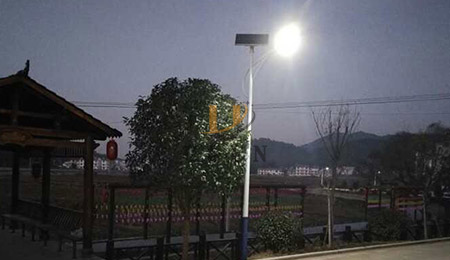
Brand reputation and market evaluation: through the network, user evaluation, industry reports to understand the brand reputation. Well-known brand R & D, production, quality control and strict, reliable products. Market recognition of the brand, product quality and performance is more guaranteed.
After-sales service content and guarantee: choose the brand that provides 3-5 years of warranty, fast maintenance response, long-term supply of spare parts. Free repair or replacement of faulty parts during the warranty period, timely maintenance to reduce the impact of street lamp failure, long-term supply of accessories to extend the service life of street lamps.
Sustainable use of energy: solar energy is inexhaustible, solar street lights use solar energy, get rid of traditional energy dependence, ensure stable energy supply, and promote the sustainable development of energy.
Reduced operating costs: solar street lights are free of electricity, saving a lot of electricity costs in the long term. long life of the LED light source, low maintenance costs, reducing the cost of light source replacement and maintenance costs, reducing operating costs.
No need for complex wiring: solar street light is independently powered, no need to lay cables, reducing construction difficulties and costs, especially for remote and complex terrain areas, reducing the impact of construction on the environment and traffic.
Quick installation and put into use: compared with the traditional street light, solar street light is easy to install, no need for complex electrical installation, can quickly complete the installation and put into use, shorten the construction cycle, as soon as possible to play the role of lighting.
Coping with different climatic conditions: solar street light is resistant to high and low temperatures, waterproof and dustproof, and can work normally in high-temperature deserts, cold polar regions and rainy areas, adapting to various harsh climates and guaranteeing the lighting needs of different regions.
Suitable for remote and special places: in remote areas without power grid, such as mountain villages, field mining areas, solar street lamps can independently provide lighting. For special places with high power stability requirements, such as military bases, emergency shelters, the reliability of solar street lights has obvious advantages.
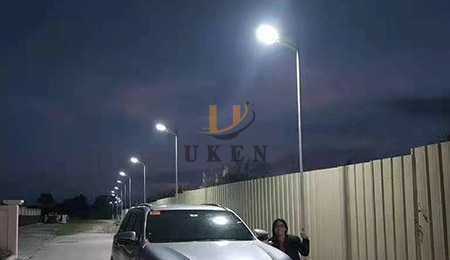
Equipment and installation costs: the initial investment in solar street lights, including solar panels, batteries, lamps and other equipment procurement, as well as installation and commissioning costs. Due to technology and material costs, the overall investment is higher than traditional street lights. For example, a set of solar street light equipment procurement and installation may require 3000-5000 yuan, while the traditional street light is about 1000-2000 yuan.
Long-term cost-benefit balance: Although the initial investment is high, in the long run, energy saving and low maintenance cost can balance the investment. Through bulk purchase to reduce equipment costs, reasonable planning and installation to reduce construction costs, to achieve long-term cost-effective maximization.
 
Weather impact on charging and lighting mechanism: cloudy, rainy, snowy days with insufficient light, solar panels to reduce power generation, affecting battery charging, resulting in shorter lighting time, reduced brightness. Extreme weather, such as heavy rain and snow, may damage the street light equipment and affect normal use.
 
Measures to cope with unstable light: Use large-capacity batteries to store electricity to cope with continuous cloudy days. Equipped with backup power source such as small wind turbine to complement solar energy. Intelligent control system optimizes energy distribution and improves the stability of the street light when the light is unstable.
Energy storage technology bottleneck: current battery energy storage technology is limited, low energy density, resulting in large size and heavy weight of the battery. Charging and discharging times are limited, which affects the life span and service life of streetlights. New energy storage technology such as solid-state battery R & D still needs time, it is difficult to large-scale application in the short term.
Photoelectric conversion efficiency enhancement space: solar panels photoelectric conversion efficiency needs to be improved, the current commercial solar panels conversion efficiency of more than 15% -22%. Enhance the conversion efficiency can increase power generation, reduce costs, but technological breakthroughs face challenges, need more R & D investment.
Conclusion of the comprehensive value of solar street lamps review solar street lamps in carbon reduction, environmental protection, application flexibility and other aspects of the advantages are significant, although there is a high initial investment, affected by the weather, there are technical limitations and other issues, but with technological progress can be gradually overcome. Its value in energy transformation, environmental protection and lighting improvement is enormous. Call to Action and Future Prospects Calls on all parties to actively adopt solar street lights, the government to increase policy support, enterprises to participate in technology research and development and promotion, and communities to rationally plan the application. Looking to the future, technological breakthroughs will enhance the performance of solar street lights, reduce costs, expand application areas, and inject a strong impetus for the development of sustainable lighting.
